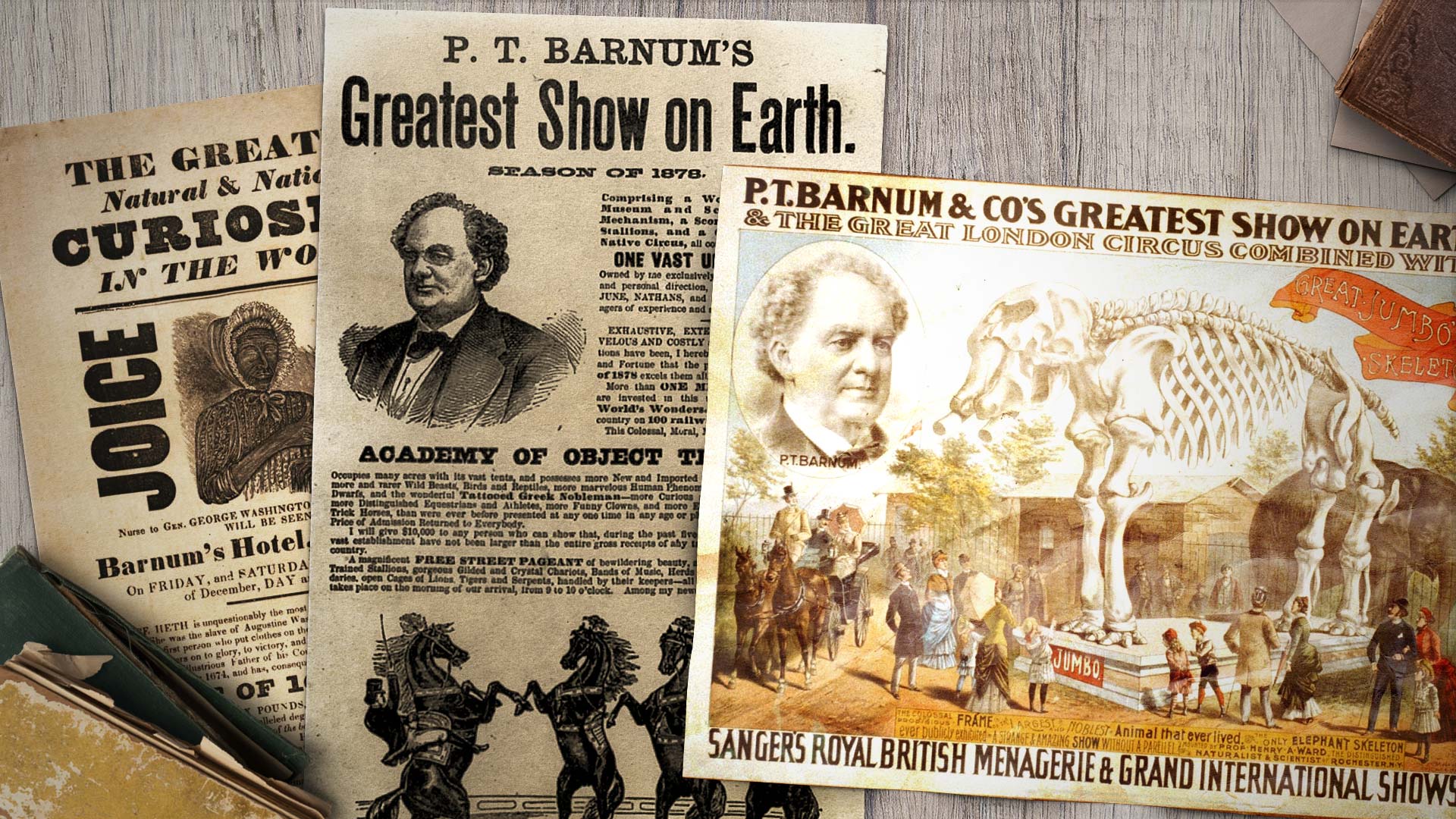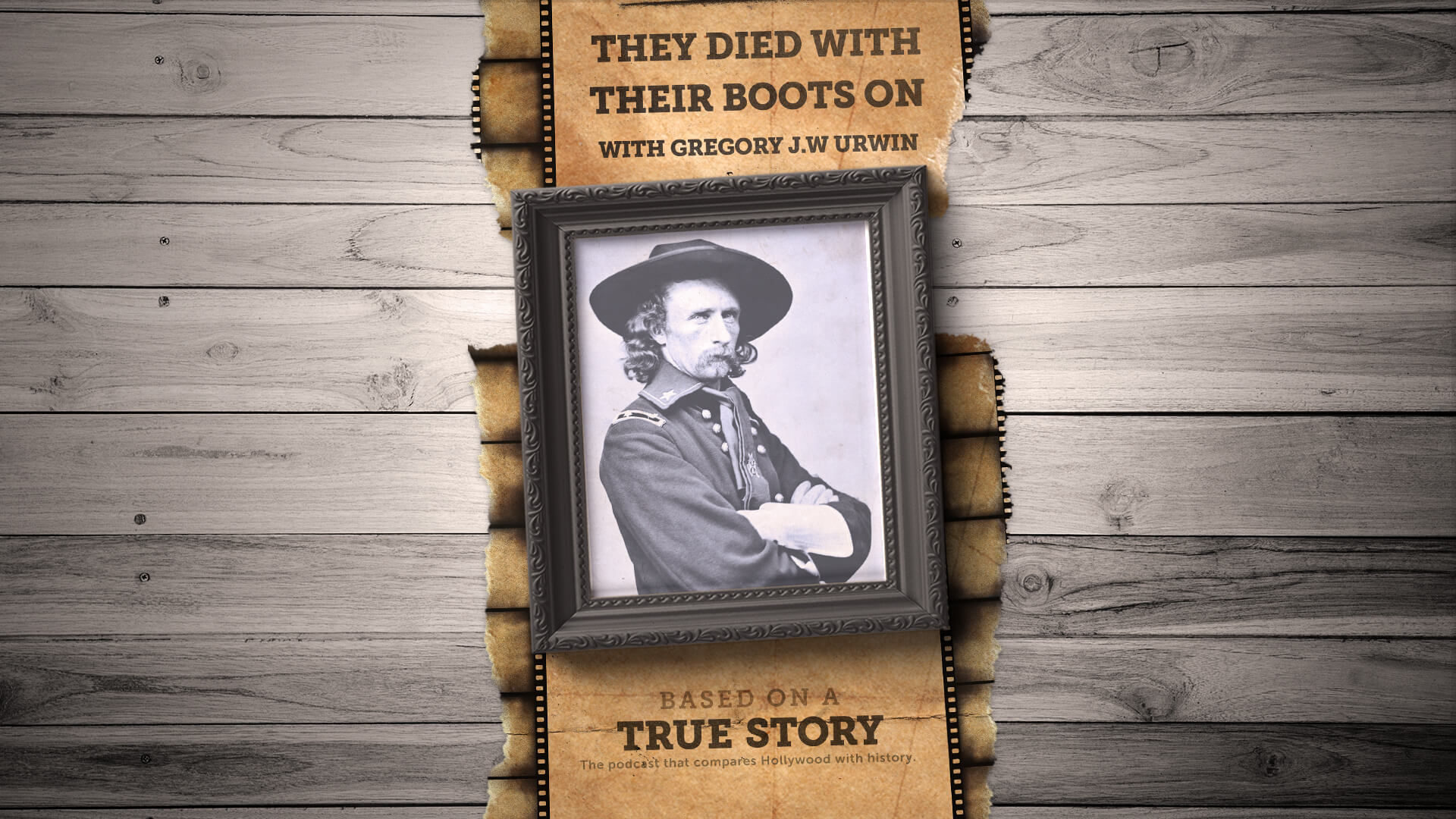On this episode, we’ll learn about historical events that happened this week in history as they were depicted in Waco, The Crucible and Seabiscuit.
Did you enjoy this episode? Help support the next one!
Disclaimer: Dan LeFebvre and/or Based on a True Story may earn commissions from qualifying purchases through our links on this page.
Transcript
Note: This transcript is automatically generated. There will be mistakes, so please don’t use them for quotes. It is provided for reference use to find things better in the audio.
February 28, 1993. Waco, Texas.
A line of vehicles are driving quickly down a dirt road.
In the lead we can see two pickup trucks. A red and white as well as a blue and white one. Both pickups are pulling covered trailers. Behind the two pickups are three large, black SUVs—they look like Chevy Suburbans, although it’s hard to verify that’s what they are from the camera angle. Overhead, a Huey helicopter passes the line of vehicles and heads toward a compound with a large building.
The camera cuts to inside the building with two women. One of the women is holding a screaming baby while behind her a young boy sits on one of the two bunk beds in the room. The other woman, not the one holding the baby, hears a noise outside and looks out the window. She’s surprised to see the helicopter fly overhead.
Downstairs, three men approach the front door. They peer outside to see another flyby with the helicopter.
Taylor Kitsch’s character, David Koresh, turns around from the front door and says all the women and children need to go upstairs right now. One of the women nods in approval as everyone heads upstairs. There are quite a few women and children, too many to count all at once.
As they get the children into rooms, downstairs we can see some of the men handing out guns—assault rifles, maybe a machine gun, it was hard to tell.
Koresh tells the men not to do anything stupid, he’s going to go outside and talk to them. Other men scatter, at least one of them going upstairs, while Andy Umberger’s character, Perry Jones, looks at Koresh and lets out a big breath of air.
Then, Koresh turns around and with one hand already up he opens the front door and steps outside. As soon as he gets outside, his other hand is up. Both arms raised just outside the front door he is rushed by the uniformed men outside. They’re all wearing ATF vests and most of them are carrying heavy weapons.
Koresh yells out for them to calm down, to please stop!
The officers yell back at him to get on the ground. He says there are women and children inside.
Then, some of the pet dogs they have on the compound start barking and growling at the armed ATF agents on the other side of the wooden fence. One of the agents puts his gun over the fence and shoots the dogs.
Hearing that, another agent yells “Shots fired!” and all hell breaks loose.
Koresh is hit as he runs back inside. Jones is hit as a shot goes through the front door just after it’s closed.
Neither are killed, but they’re bleeding badly. From inside the building, one of the men fires back and we can see an ATF agent get hit and go down. One of the women near a window gets shot in the hand, the baby she was holding falling as she hits the ground as well.
Both sides start firing back and forth creating a hail of bullets that rip through the walls, doors, and glass windows of the building.
Inside, as he ducks for cover from the gunfire, Demore Barnes’ version of Wayne Martin calls 911. He screams into the phone that there are 75 ATF agents around our building and they’re shooting at us!
This depiction comes from the 2018 miniseries called Waco and it shows us an event that happened this week in history: The gunfight that started a 51-day siege between the U.S. government and the Branch Davidians.
The series was correct to show that 77 agents from the Bureau of Alcohol, Tobacco, Firearms and Explosives—or just the ATF—went to the Branch Davidians compound 13 miles outside of Waco on the morning of February 28th, 1993.
The official reason they were there was to execute search warrants on the compound for weapons as well as a warrant for the arrest of David Koresh. They believed the Branch Davidians had about 250 weapons on the compound. There were 126 Branch Davidians on the compound, 46 of whom were children.
From there, the true story is shrouded in a little more mystery than what we see in the series simply because there’s a lot of “he said/she said” type of finger-pointing.
For example, in the series we see dogs barking at the ATF agents from behind a fence. That’s what causes the agent to shoot the dog, which triggers another agent to think they’re being fired upon so from there everyone opens up.
This is what the official ATF website has to say about how it started:
The Davidians were alerted to the impending raid by a local postman, who was also a cult member. The heavily armed, cult members were waiting in ambush as the agents unloaded from their vehicles. Koresh was outside on the porch, as the agents approached telling him they had a search warrant and instructing him to “get down,” he retreated inside the house. Gunfire burst through the door, as the agents approached, one agent was wounded.
But, according to Branch Davidian survivors, they deny shooting first. We’ll probably never know the true story for certain.
Another thing the series got right was that 911 call from Wayne Martin. This is an excerpt from the real 911 call:
[ PLAY 911 CALL HERE ]
They didn’t call it off.
The ensuing gunfight lasted two and a half hours. Four ATF agents and six Branch Davidians were killed in the opening gunfight. After that, the FBI took over and for the next 51-days the Branch Davidians were held under siege by, according to some reports, up to 900 federal agents.
The siege ended on April 19th, 1993 and in the end those four ATF agents died while 82 Branch Davidians lost their lives.
If you want to see this week’s event in history depicted on screen, check out the 2018 miniseries called Waco. The ATF agents arrive at the compound at the very beginning of the third episode.
February 29, 1692. Salem, Massachusetts.
At least a dozen young girls are sitting in a row. They’re each wearing very modest and dull-colored dresses with white bonnets. A few of them also have white aprons. A man seems to be scolding them. He says someone had to have led them to dance around the fire. Save yourselves and tell me who it was.
We can see the man now, it’s Rob Campbell’s character, Reverend Hale. He asks more questions of the girls, none of whom have said a single world.
Did someone drink from the kettle that was over the fire? Were there spells being cast?
Looking at one of the girls right in front of him now, he yells at her.
“Was there!?”
Obviously afraid, she shakily points a finger at Winona Ryder’s character, Abigail Williams, who immediately denies it. She insists it wasn’t her, but the Reverend wants a name. Who was it? Then, Williams gives a name: Tituba.
In the next shot, we can see another Reverend, Bruce Davidson’s version of Reverend Parris, alongside Jeffrey Jones’ Thomas Putnam with Abigail Williams and Charlayne Woodard’s character of Tituba. Williams continues to accuse Tituba, but Tituba insists she didn’t do anything bad. Parris and Putnam throw Tituba to the ground with force while Williams’ claims get even more extreme, saying Tituba made them drink blood.
At this, Reverend Hale is even more outraged. You drank blood!? Then, another claim from Frances Conroy’s version of Ann Putnam, saying it was her baby’s blood—you murdered my babies, Tituba!
Reverend Hale asks Tituba when she compacted with the devil, but Tituba says she doesn’t. To this, Reverend Putnam whips Tituba, saying he’ll beat her to death unless she admits to compacting with the devil. Finally, as the whipping continues, Tituba says she doesn’t desire to work for him.
The “Him” she mentions referring to the devil.
The whipping stops, but Reverend Hale isn’t done with her yet. He’s going to rid her of the devil!
He takes her up into a room and asks her when the devil comes, does he bring other people? Ann Putnam is there, she asks Tituba if Sarah Goode is one of the others working with the devil.
Tituba stutters, she says it was dark, she couldn’t see anyone else.
Reverend Hale tells Tituba that the devil can never overcome a minister, so he will protect her. You are here to help us cleanse this village. Now, who came with the devil?
Ann Putnam again blurts out, asking if it was either Sarah Goode or Osborne. The Reverend insists Tituba give them their names—the names of others in league with the devil!
Then, Tituba, a Black woman from Barbados, tells a story about how the devil tells her that he has white people who belong to him. And she saw Sarah Goode and Osborne!
Others in the room gasp while Anna Putnam says she knew it!
This depiction comes from the 1992 movie The Crucible, and while that movie is an adaptation of a play by Arthur Miller so it’s one more step removed from history, it is true that Tituba was a real person, and she along with Sarah Goode and Sarah Osborne were three women accused of witchcraft this week in history.
We don’t know a lot about the real Tituba, but we do know that Reverend Samuel Parris brought three enslaved people with him when he arrived in Massachusetts from the Caribbean. It’s likely she was one of them.
We also don’t know if Tituba tried to practice any sort of magic with the young girls in Salem like the movie suggests.
The true story is that Reverend Parris’ 9-year-old daughter, Betty, started exhibiting what they thought was strange behavior. She and the 11-year-old Abigail Williams, who was Reverend Parris’ niece, and the 12-year-old Ann Putnam, Jr. started having fits. They were contorting violently and seemingly uncontrollable bursts of screaming. The town doctor and Reverend Hale, a neighboring minister, came to get to the bottom of these afflictions. The diagnosis was that the girls were bewitched. So, they tried to get to the bottom of it.
Meanwhile, other young girls in the town started to act up in the same manner. They were “afflicted” as well.
Trying to get to the bottom of the bewitchment, the young girls blamed Tituba who, in turn, was beaten as they tried to get a confession out of her. She claimed to see visions of the devil and witches. Two other women, Sarah Goode and Sarah Osborne were also named.
And so it was that, on February 29, 1692, the first arrest warrants were officially issued for Tituba, Sarah Goode and Sarah Osborne. It was the start of what we now know as the Salem witch trials when, between February of 1692 and May of 1693, about 200 people were charged and 19 “witches” were executed.
In 1976, Science magazine published a study that suggested the cause was fungus ergot found in rye, wheat and other cereals that can cause delusions, vomiting and muscle spasms.
If you want to see this week’s event in history depicted on screen, check out the 1992 movie The Crucible. The first accusations start around the 29-minute mark. And if you want to dive deeper into the true story, we covered The Crucible back on episode #143 of Based on a True Story.
An announcer holds the mic as he waves at the throngs of people behind him. He says it’s the largest crowd ever at Santa Anita with 55,000 in the stands and 20,000 in the infield and it’s only 12 o’clock!
The camera cuts to a man strapping his boot on tight. The camera pans up to show us Jeff Bridges’ character, Charles Howard, and Elizabeth Banks’ character, Marcela Howard. They’re standing along with Chris Cooper’s character, Tom Smith.
Now we can see the man who was pulling on his boots: Tobey Maguire’s character, Red Pollard. Marcela Howard hands Pollard a St. Christopher necklace for luck. And with that, Red says it’s time to go win a race.
In the next shot, we can see Red Pollard being helped onto a horse by Tom Smith. Wearing the number 9, Smith gives Pollard a few last-minute tips. They look nervous, but Pollard reassures them it’ll be fine. Charles Howard takes his seat to watch the race as we see all the horses take their places in the starting gate.
The bell sounds and we can hear the thunder of hooves as the horses race down the track.
We’re in the thick of the race now. At first, Pollard is in the middle of the pack, but as the race continues he falls behind—far behind. Pollard urges his horse on until he catches up to another jockey, Georgie. They chat with each other for a brief moment and let the two horses see each other.
That seems to be all he needs as Pollard urges his horse on ahead.
Before long, he catches up to the rest of the pack. Then he passes one horse. Two. Three. Taking the outside track, they keep passing the other horses almost as if he’s not even trying. As they come around the stretch, the movie switches into slow motion as we see Red Pollard riding Seabiscuit way ahead of the rest of the pack. The crowd is cheering as Seabiscuit takes the victory!
This depiction from the 2003 movie named after the horse, Seabiscuit, tells the story of an event that happened this week in history.
It was on March 2nd, 1940 at the Santa Anita Park in Arcadia, California that Seabiscuit rode his last race. And just like in the movie, he won that race…but it didn’t happen quite like we see in the movie.
The true story is that Seabiscuit didn’t fall that far behind only to race ahead of everyone else so easily.
You can find footage of the race itself on YouTube and there’s no indication of Red Pollard chatting with another jockey named George Woolf in the middle of the race, either. George is played by Gary Stevens in the movie, and he was based on a real person who raced in the 1940 Big ‘Cap, as the Handicap is called.
In the true story, George was riding Heelfly and came in sixth place.
So, while the race itself wasn’t quite as dramatic as the movie shows it to be, it is true that Seabiscuit came in first place and cemented his name in the history books.
If you want to see this week’s event in history depicted on screen, check out the 2003 movie Seabiscuit. The final race starts at about two hours and four minutes into the film. If you want to dig deeper into the true story, we covered that movie back on episode #131 of Based on a True Story.
https://abcnews.go.com/2020/video/branch-davidian-follower-calls-911-atf-raids-compound-52047012
https://www.vox.com/2018/4/19/17246732/waco-tragedy-explained-david-koresh-mount-carmel-branch-davidian-cult-25-year-anniversary
https://www.thoughtco.com/tituba-salem-witch-trials-3530572
https://www.horseracingnation.com/race/1940_Santa_Anita_Handicap
https://usatoday30.usatoday.com/community/chat_03/2003-07-25-paulick.htm
Share this:
- Click to share on Twitter (Opens in new window)
- Click to share on Facebook (Opens in new window)
- Click to share on Reddit (Opens in new window)
- Click to share on Pocket (Opens in new window)
- Click to share on LinkedIn (Opens in new window)
- Click to share on WhatsApp (Opens in new window)
- Click to share on Telegram (Opens in new window)
- Click to email a link to a friend (Opens in new window)
- Click to print (Opens in new window)



